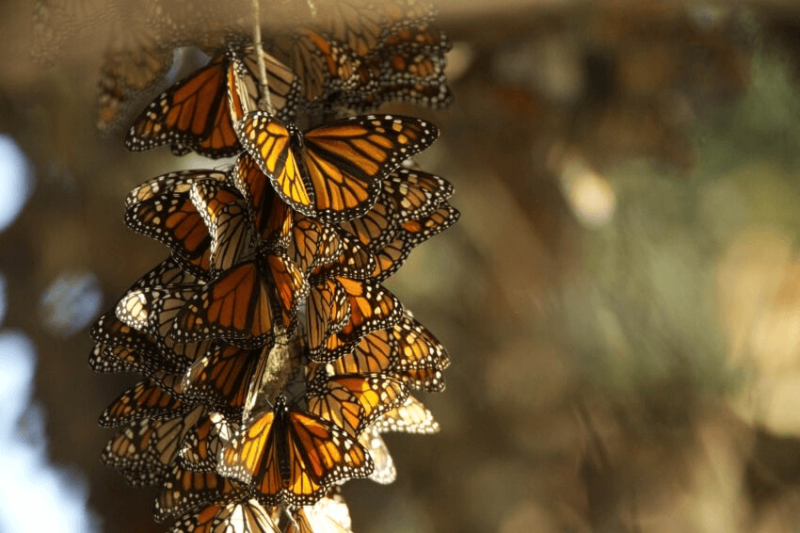The population of western monarch butterflies wintering along the California coast has rebounded for a second year in a row after a precipitous drop in 2020, but the population of orange-and-black insects is still well below what it used to be, researchers announced [January 31].
Volunteers who visited sites in California and Arizona around Thanksgiving tallied more than 330,000 butterflies, the highest number of these insects counted in the last six years. It was a promising rebound after the annual winter count in 2020 recorded fewer than 2,000 butterflies. In 2021, the number recorded was 247,000.
“I think we can all celebrate and this is really exciting,” said Emma Pelton, a conservation biologist at the Xerces Society.
The population is still far below what it was in the 1980s, when monarchs numbered in the millions.
Scientists say the butterflies are at critically low levels in western states because of destruction to their milkweed habitat along their migratory route as housing expands into their territory and use of pesticides and herbicides increases.
Along with farming, climate change is one of the main drivers of the monarch’s threatened extinction, disrupting an annual 3,000-mile (4,828-kilometer) migration synched to springtime and the blossoming of wildflowers.































